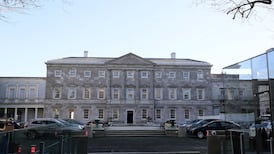It will be some time before the likely shape of the next government becomes clear. But with Sinn Féin having taken centre stage, how would its economic policies line up with Fianna Fáil if these two parties do end up in coalition talks? Participation from at least one of the smaller parties also looks likely to be needed to reach a majority.
1. The public finances: The two parties are both committed to keeping the exchequer finances in surplus. Fianna Fáil aims for a somewhat bigger surplus – around €5.7 billion per annum by the end of a five-year term, compared to €3.4 billion for Sinn Féin. As part of this Fianna Fáil is also in favour of building up the rainy day fund to deal with future shocks, while Sinn Féin is not. Finally, Fianna Fáil wants to use the surplus payments due from Nama, estimated at €4 billion, to pay down debt, while Sinn Féin wants to use the Nama money as a once-off boost to the housing programme.
Overall Sinn Féin plans to commit more than Fianna Fáil to both current and capital spending . A mid-point might be agreed, but finding an agreed definition of “prudence” and ways to protect the public finances from shocks might not be easy. A vital issue would be clarity between the parties of what would happen if growth and tax revenues were lower than expected.
2. Personal Tax: Sinn Féin has called for tax cuts for lower-earners to be paid for by hikes on the better-off. Fianna Fáil's manifesto called for some relief for low -and middle-earners and no significant rises. On the USC, both are calling for some cuts – Sinn Féin on the first €30,000 of earnings and Fianna Fáil opting for a reduction in the main rate, which applies on earnings from around €20,500 to €70,000, from 4.5 per cent to 3.5 per cent. Compromise might be found here, but Sinn Féin's plans to tax higher earners by gradually eliminating tax credits on earnings of more than €100,000 and imposing a new 5 per cent levy on earnings above €140,000 were criticised by Fianna Fáil during the campaign. Sinn Féin also wants higher tax on bigger pension pots.
3. Housing: This area would be central to any deal, with Sinn Féin calling for an additional €6.5 billion to be spent on social and affordable homes, partly funded by the Nama cash. Fianna Fáil also wants to spend significantly more to deliver social and affordable houses – and both parties highlight the role of local authorities and housing bodies. Both also support a big rise in the vacant site levy, although Sinn Féin goes further and also calls for a rise in stamp duty on commercial property to 12.5 per cent. So some ground to be covered in the funding and implementation of housing policy, but both are heading in the same direction on house-building. On rent both favour tax credits for renters, but Sinn Féin also wants a three-year rent freeze, which Micheál Martin has backed away from citing legal advice.
4. Big business: Sinn Féin's targeting of multinationals and big business sets it apart from Fianna Fáil in this area and led to warnings from Fianna Fáil of the impact of its policies on growth and investment. A number of big fund-raisers in the Sinn Féin manifesto are based on rises in business tax, including a change in the rules for taxing intellectual property and a proposed rise in employers' PRSI on incomes above €100,000. The party also wants to end the use of past losses by the banks to avoid corporate tax bills and raise the bank levy, which led to a fall in the value of bank shares on Monday. Fianna Fáil has pointed to a Department of Finance review which warned that this could cut the value of the State shareholding in the banks and also lead to higher costs for customers on products such as mortgages. Sinn Féin also wants to give the Central Bank power to cap mortgage rates. In summary, the Sinn Féin policies towards big business and the banks are likely to be a significant problem for Fianna Fáil.
5. Other areas : Sinn Féin wants to return the State pension age to 65, while Fianna Fáil wants to freeze the age where it is now at 66, pending a review. So some compromise would be needed here.
As it would on Sinn Féin’s call to abolish the local property tax, which Fianna Fáil wants to retain.
On carbon tax, Sinn Féin wants to freeze it at current levels until viable public transport alternatives are available, while Fianna Fáil wants to continue to increase it to €80 by 2030 as agreed by the Joint Oireachtas Committee last year.











